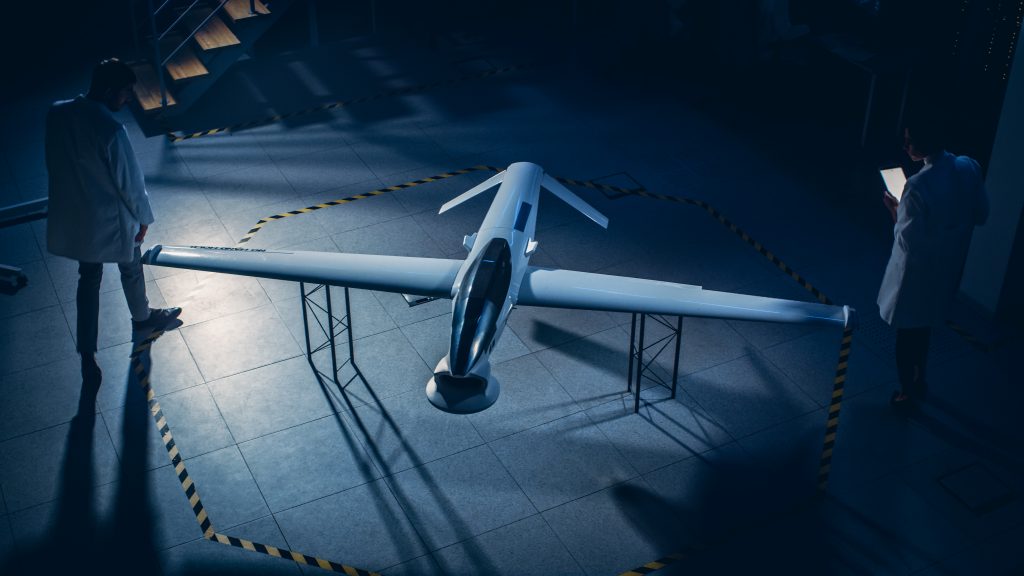Next up: Battery-Powered Airplanes
With hundreds of prototypes in development, electric battery-powered airplanes could be the next big disruptor in the transportation sector.

After shaking up the passenger vehicle sector, electric battery innovators are targeting another big segment of the economy: commercial aviation.
In the not-so-distant future that means both passengers and cargo will likely be traversing the earth’s upper atmosphere powered by battery-driven propulsion.
And while it may seem hard to believe, a 100% electric battery-powered plane has already been certified as airworthy by the Federal Aviation Administration (FAA). That craft, known as the Alpha Electro, was created by the Slovenian company Pipistrel.
At a cost of about $150,000, the Alpha Electro can remain aloft for 90 minutes on a single charge, powered by a battery pack one-fifth the size of the one found in a Tesla (TSLA) Model S.
But the early successes of companies like Pipistrel don’t necessarily indicate that passengers will be flying transatlantic commercial flights on battery-powered jets anytime soon. Battery-powered aircraft propulsion systems are still in the early innings, with an industry standard still years away.
Much like the passenger vehicle sector, advancements in electric-powered aviation will likely be incremental. Meaning that before pure electric commercial flights arrive, there may be hybrid technologies (involving a mix of traditional fuels and electric power) that bridge the industry’s transformation—much like the Toyota (TM) Prius has done for the passenger vehicle sector.
One of the biggest challenges when it comes to battery-powered flight is balancing the weight of batteries with the necessary power—often referred to as energy density. Existing battery technologies simply don’t produce the necessary power to propel a commercial jet—at least not without a battery that would theoretically be too heavy to carry.
One estimate provided by Duncan Walker, a senior lecturer on applied aerodynamics at Loughborough University, indicated that to power an Airbus A830 on a 9,300-range flight, the required batteries would be 30-40 times heavier than the jet fuel.
Back in 2018, Tesla CEO Elon Musk referenced the energy density challenge related to battery-powered commercial aviation. His estimate at that time suggested that energy densities would have to double, to about 500 watt-hours per kilogram, for battery-powered aviation to become viable on a large scale.
However, the commercial aviation sector isn’t represented by only long-distance flights on ultra-large planes.
In fact, about 50% of all global flights cover distances of 500 miles or less. That means opportunities exist for aviation innovators targeting short-haul commercial routes, as well as the private aviation sector (like the Alpha Electro).
Moreover, there’s an aspirational niche of battery-powered aviation market that hopes to provide services akin to Uber, but in the sky—so-called “air taxis.” The same goes for home delivery services, which could theoretically be conducted using electric-battery-powered drones.
Some of the young companies pursuing “aerial urban mobility” include Archer Aviation (ACIC, USA), ePlane Company (India), EHang (EH, China), Joby Aviation (RTP, USA), Lilium (Germany) and Volocopter (Germany).
Interestingly, a few of the above air-taxi innovators are even trying to create crafts that can take-off and land vertically, often referred to as eVTOL (electric vertical take-off and landing). Mechanically, this involves a blend of rotors and wings—the former for take-off/landing and the latter for long-distance flight.
Air taxis could theoretically service urban routes within cities (like Uber and Lyft), or short-haul routes to nearby cities and towns within a radius of 100-200 miles. The air taxi concept is clearly viewed as attainable because “vertiports” (i.e. airports without runways) are already being developed in some cities around the world.
Considering that airplanes currently account for roughly 2.5% of global carbon emissions, the hope is that the introduction of electric planes (even if only utilized shorter routes) will help reduce the aviation industry’s carbon footprint in the coming years.
In terms of challenges, one of the biggest is represented by the daunting time and cost typically involved in designing, building, testing and certifying an airborne vehicle. The all-in time and cost will vary based on the scale of the project, but 7-10 years and tens (or hundreds) of millions of dollars could easily be consumed en route to FAA regulatory approval.
It should be noted that the aforementioned Alpha Electro designed by Pipistrel was certified as “airworthy” by the FAA, which is a case-by-case classification for individual planes. In order for an aircraft to be mass-produced, the design must receive a so-called “type certification” from the FAA. Pipistrel actually has an aircraft that has received that certification as well—the Velis Electro.
A couple other groups leading the transformation in electric-powered aviation include Rolls-Royce (RYCEY) and the National Aeronautics and Space Administration (NASA). Rolls-Royce’s Spirit of Innovation aircraft made a splash recently when it boasted it would soon claim the record for the world’s fastest electric-powered aircraft, with the Spirit of Innovation expected to reach speeds of 300mph. The new record could be set this spring.
The Rolls-Royce Spirit of Innovation is part of the Accelerating the Electrification of Flight program in the United Kingdom. The plane is powered by a cutting-edge propulsion system that relies on a 6,000 cell battery pack, considered one of the most energy-dense in use.
NASA, for its part, is trying to push the electric aviation envelope, as well. It’s lead electric aviation candidate is the X-57 Maxwell, which is currently undergoing rigorous testing at the Armstrong Flight Research Center in Edwards California.
NASA created the X-57 Maxwell to demonstrate how commuter planes can switch from traditional combustion engines to electric motors for cleaner, quieter and more sustainable air travel. The X-57 Maxwell prototype is actually a modified Tecnam P2006T aircraft that is outfitted with 14 electric motors instead of the original two-piston engines.
NASA expects the X-57 will have a range of roughly 100 miles and a cruising speed in excess of 170 mph. The flight time available on a single charge is expected to be 40-50 minutes.
With over 200 different electric planes and air taxis currently in development, there’s no doubt that additional breakthroughs will be announced in 2021.
Long-time carrier United Airlines (UAL) apparently sees a lot of potential in the battery-powered future of aviation. United recently took a stake in the eVTOL start-up Archer, when the latter company raised $1.1 billion through a special purpose acquisition (SPAC) merger with Atlas Crest Investment Corp (ACIC).
To learn more about recent SPAC mania, readers are encouraged to review a previous Luckbox article focusing on this topic.
To follow everything moving the markets, readers can also tune into TASTYTRADE LIVE, weekdays from 7 a.m. to 4 p.m. CST.
Offer extended through April 1st: Subscribe to Luckbox in print and get a FREE Luckbox T-shirt!
See SUBSCRIBE or UPGRADE TO PRINT (upper right) for more info.
Sage Anderson is a pseudonym. He’s an experienced trader of equity derivatives and has managed volatility-based portfolios as a former prop trading firm employee. He’s not an employee of Luckbox, tastytrade or any affiliated companies. Readers can direct questions about this blog or other trading-related subjects, to support@luckboxmagazine.com.



















